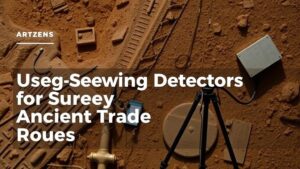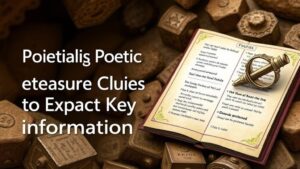Using Rhythmic and Meter Analysis to Decode Poetic Treasure Riddles
Using Rhythmic and Meter Analysis to Decode Poetic Treasure Riddles
Deciphering the enigmatic allure of poetic treasure riddles involves a blend of creativity and analytical thought, particularly through rhythmic and meter analysis. These elements are integral to understanding the deeper meanings encased within these intricate literary forms. This article will explore how rhythm and meter serve as gateways to unlocking the mystery behind treasure riddles, providing educators, students, and literary enthusiasts with valuable tools for poetic interpretation.
The Role of Rhythm in Poetry
Rhythm in poetry refers to the pattern of sounds created by the arrangement of stressed and unstressed syllables. This musicality not only enhances the aesthetic quality of poetry but also aids in conveying meaning. For example, in Edgar Allan Poes The Raven, the rhythm creates a haunting effect that complements the poems themes of loss and mourning.
To decode poetic treasure riddles, one must pay attention to the rhythm. Many riddles use specific rhythmic patterns to guide readers toward the solution. For example, a riddle may use an iambic meter to convey a sense of urgency, suggesting that the answer lies within the immediacy of the poems emotional tone.
Understanding Meter
Meter is the structured arrangement of rhythm within a poem. It refers to the specific combinations of stressed (/) and unstressed (x) syllables organized into feet, such as iambs (x /), trochees (/ x), anapests (x x /), and dactyls (/ x x). Different meters evoke various emotional responses and can provide hints towards the riddle’s solution.
For example, consider the use of trochaic meter in a treasure riddle that may evoke feelings of certainty and strength. Analyzing the meter can reveal hints about the nature of the treasure being alluded to. If the stanza flows with a trochaic beat, one might infer that the treasure is not just material but carries emotional weight.
Case Study: The Use of Rhythmic Patterns in Treasure Riddles
To illustrate the practical application of rhythmic and meter analysis, let us examine a classic poetic treasure riddle:
- “I speak without a mouth and hear without ears. I have no body, but I come alive with the wind. What am I?”
This riddle, although presented in free verse, follows an underlying rhythm that beckons analysis. The repetition of three-line stanzas creates a cadence that invites readers to reflect deeply. The rhythm underscores the ephemeral nature of the answer, which is often interpreted to be an echo. Here, the use of varied meter captures the elusive quality of sound, further guiding the reader towards the answer.
Decoding Techniques: Steps to Analyze Rhythm and Meter
To effectively decode poetic treasure riddles using rhythm and meter analysis, practitioners can follow these steps:
- Identify the Meter: Begin by scanning the poem to identify the predominant meter. Is it primarily iambic, trochaic, or another form?
- Examine Rhythmic Patterns: Look for variations in rhythm that suggest shifts in tone or meaning. Are there abrupt changes that signify a critical clue?
- Annotate Stressed and Unstressed Syllables: Mark the stressed and unstressed syllables to visualize the rhythm. This can highlight any inconsistencies that may serve as literary red herrings.
- Contextualize the Poem: Understand the historical and cultural context in which the riddle was written. This adds layers of meaning that can inform the analysis.
- Relate to Themes: Connect the rhythm and meter to the overall themes of the poem. What emotional state does the meter suggest?
Real-World Applications
The intersection of rhythm, meter, and riddle analysis is not solely an academic endeavor; it has real-world implications in education and literary theory. Teachers can use these techniques to foster critical thinking among students, enhancing their appreciation for poetry and developing analytic skills. For example, poetry workshops focusing on rhythm and meter can render students more adept at interpreting complex texts.
Also, understanding these elements can elevate one’s own poetry writing. Poets who engage with rhythm and meter are better equipped to manipulate language and evoke specific emotional responses in their readers, thereby enriching their poetry.
Actionable Takeaways
Decoding poetic treasure riddles through rhythmic and meter analysis is not just an academic exercise; it is a practical skill that enriches one’s interaction with literature. Here are key takeaways:
- Study various rhythmic patterns and their emotional implications.
- Practice scanning poems for meter to sharpen analytical skills.
- Engage with others in literary discussions to enhance understanding and interpretation.
- Incorporate rhythm and meter techniques into your poetry writing for greater depth.
By engaging deeply with the rhythms and meters of poetry, readers and writers alike can uncover the treasures hidden within poetic riddles, revealing layers of meaning that resonate far beyond the page.



